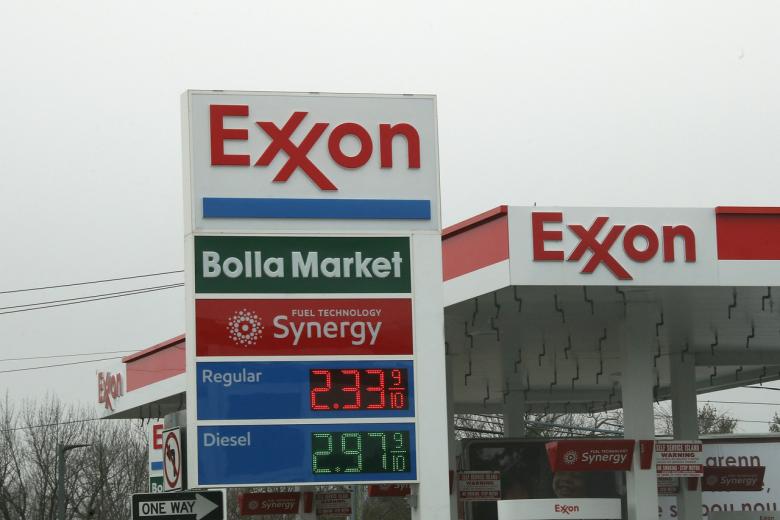NEW YORK (BLOOMBERG) - ExxonMobil's proxy battle with an activist fund manager intensified after it accused the oil giant of obscuring the trajectory of its greenhouse gas emissions through disingenuous reduction targets.
Exxon's chief carbon goal of cutting upstream emissions intensity - a measure of pollution per barrel of oil produced - by as much as 20 per cent by 2025 is so limited it only includes about 10 per cent of its overall carbon footprint, investment firm Engine No 1 said on Monday (April 26) in a presentation. Even if Exxon achieved the goal, its emissions intensity would be 6 per cent to 8 per cent higher than in 2009-2010, according to its 81-page document.
"ExxonMobil has sought to obscure long-term risk by distorting its long-term emissions trajectory," the San Francisco-based firm said. "Even by its own limited standards, ExxonMobil has gone backwards and aims to do worse in 2025 than 2010."
Engine No 1 began a rare proxy contest against the West's biggest oil company in December after a decade of poor financial returns and a strategy the firm claims fails to meet the needs of the energy transition. The fund only has a 0.2 per cent stake in Exxon, but has won support from California State Teachers' Retirement System and New York's state pension fund.
Exxon has resisted publishing a mid-century net zero emissions target, insisting that oil and gas have a profitable future for decades to come even if the world lowers emissions in line with the United Nations' Paris Agreement on climate change. But the US company's tone around environmental issues has changed significantly in recent years as calls from investors and public to tackle climate change increased.
Exxon began a dedicated low-carbon business in February focused on reducing emissions from hard-to-decarbonise sections of the economy such as heavy industry. That came just months after announcing a series of emissions reduction targets that included lowering methane intensity and eliminating routine flaring.
Still, Exxon's main goal of cutting upstream emissions intensity is flawed, according to Engine No 1. It not only excludes customer emissions, which make up about 80 per cent of the total, but also doesn't account for Exxon's non-operated assets, nor its giant refining and chemicals businesses. Furthermore, the firm said Exxon recently revised upward the target's 2016 baseline, which would make the goal easier to achieve.
Exxon "supports the aims of the 2015 Paris Agreement and society's efforts to achieve net-zero emissions," the company said in a Monday statement. "The pillars of ExxonMobil's climate strategy, the investments the company is making in lower-emission technologies, and the actions taken to reduce emissions across its operations are consistent with these global efforts."
Exxon's overall greenhouse gas emissions declined 13 per cent from 2011 to 2020 due to energy efficiency improvements, reductions in flaring and venting, and impacts tied to the Covid-19 pandemic, the company said.

